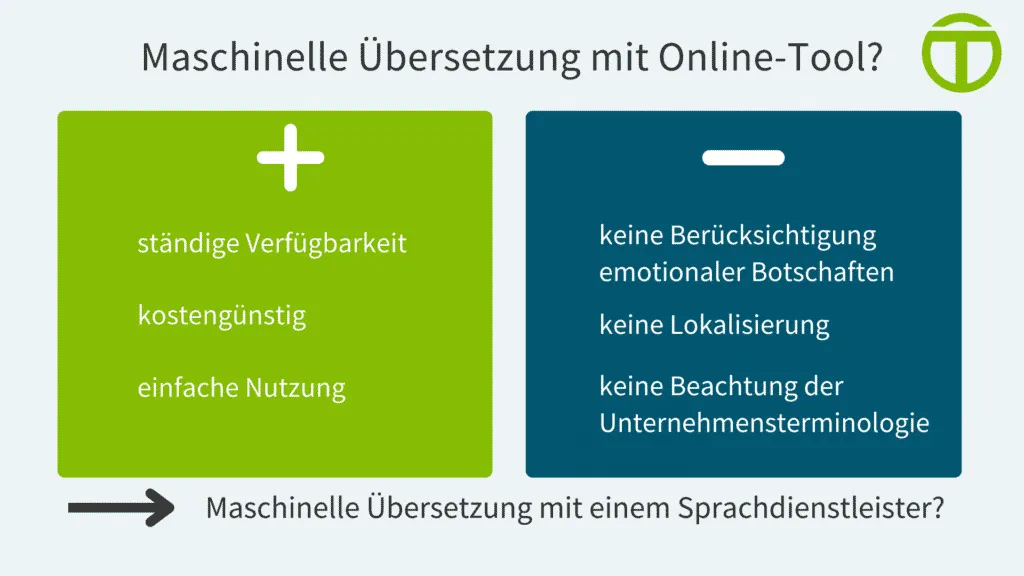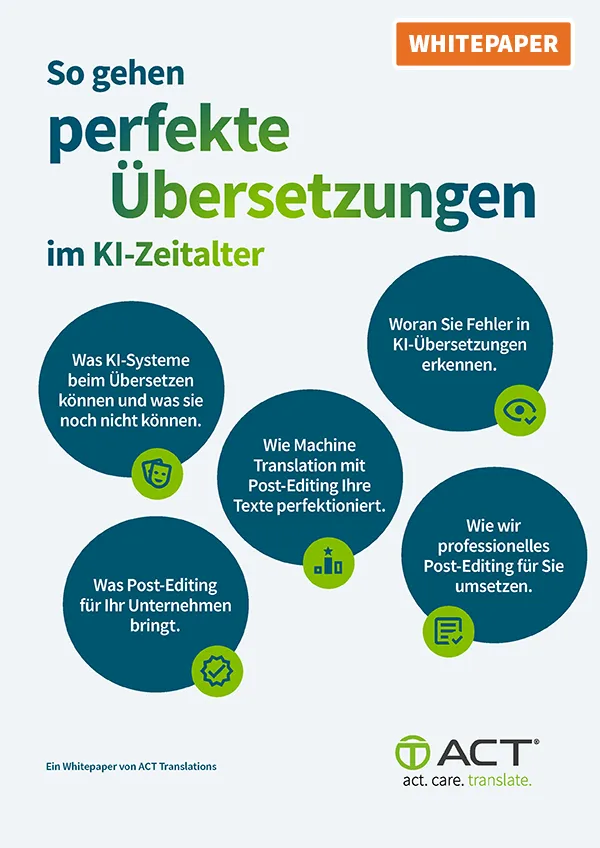Machine translations using online tools are growing more and more popular. And with good reason: AI and deep learning mean that the days of translating “football fans” into the equivalent of “football ventilators” are gone. Today, anyone can get translations into various languages at the touch of a button.
But what are the limits of machine translation? Can you combine machine translation with human capabilities and get the best of both worlds? And when does it make sense to use a professional translation agency rather than the free online platforms?
Read on to find out which translation method is right for your needs.
What is machine translation?
DeepL, Google Translate, Bing Microsoft Translator: recent years have seen a huge rise in the number—and the quality—of machine translation (MT) tools available online. But how exactly do they work?
Machine translation systems translate text automatically from one language to another with no human intervention. Since 2014/2015, this process has incorporated artificial intelligence, which imitates the networks of neurons in the brain. The machines are trained on an ongoing basis and fed with vast amounts of previously translated text, so they keep getting better all the time.
Benefits: language skills at your service 24/7
In today’s fast-paced world, machine translations can do some things that human translators can’t. Machines are always available, so they can deliver translations fast any time of the day or night. Once you’ve copied the text into the tool, your translation is ready in a single click. It doesn’t matter whether it’s a 200-word blog post or a 30-page operating manual (although online tools have character limits, so you probably need to break long documents up into smaller chunks).
Many online translation tools have no-cost basic versions, making them a budget-friendly option. Thanks to these features, machine translation may be a good choice when you’re faced with tight deadlines, large volumes of text and limited financial resources.
But the unfiltered machine translations you get on free online platforms have a number of weak points that you need to be aware of.
Drawbacks: The problems with straight machine translation
An online translation tool is a machine that doesn’t understand the context of your document, so it can’t adapt to your needs. It produces translations that are usually adequate for in-house communication or product information. But any time you need a translation for marketing purposes or a legal document, a contract, or any text where human safety is involved such as medical information, you should be very wary of using any online translation as is.
Nuances in meaning, plays on words and double entendres are usually more than any software can cope with. While most programs are now capable of delivering grammatically accurate text, machine translation may skew the message, misinterpret the meaning, or translate words incorrectly or leave them out altogether. These “mishaps” will only be flagged by a human proofreader who speaks both the source and the target languages fluently and is capable of comparing the two versions.
Professional-quality content intended for the public should always be checked and approved by a professional post-editor. If you skip post-editing, you run the risk of unintentionally sending the wrong message or publishing a text with errors, which could have serious consequences for your company.

Partnering with a translation agency: Machine translation with the human touch
Did you know that some translation agencies also offer machine translation as an option? Why would you want that? It’s simple: machine translation makes it possible to lower costs while delivering quality. That’s because the machine translation programs that agencies use are more powerful and perform better than the free online tools.
They can learn and can be trained with your company’s own terminology and content. When you have repeat orders, machine translations are an especially good way of producing texts that are customized for your company.
But even with the high-performance programs available at some agencies, human post-editing is always vital in order to compare all the linguistic nuances, check the context and adapt for any cultural factors that may be important for your target audience. Full post-editing can also help ensure a natural flow, which is hard to achieve with machine translation.
At ACT, machine translations are checked by professional post-editors, adapted to suit the target audience and adjusted wherever necessary. Our experts are trained in post-editing methodologies.
You save time and get the best of both worlds: lower-cost, high-quality translations that your customers trust.
Summary: What type of translation is right for you?
Do you need a professional translation but can’t decide whether to use a free online tool or go through an agency? If your budget is limited but you still need quality content, machine translation plus post-editing performed by a language services provider may be a good option.
The team at ACT Translations will be happy to help you choose the best method for translating your texts. Get in touch now for a no-obligation consultation.




